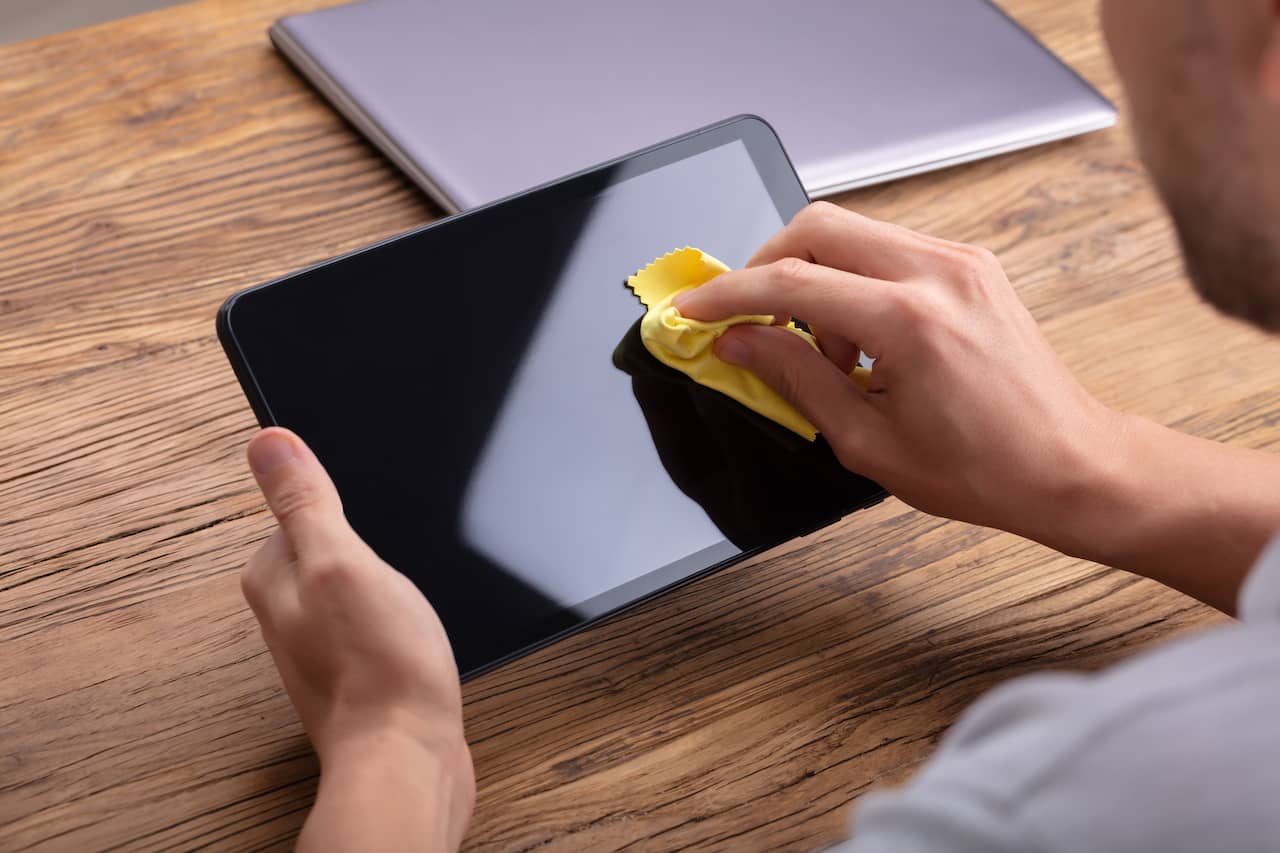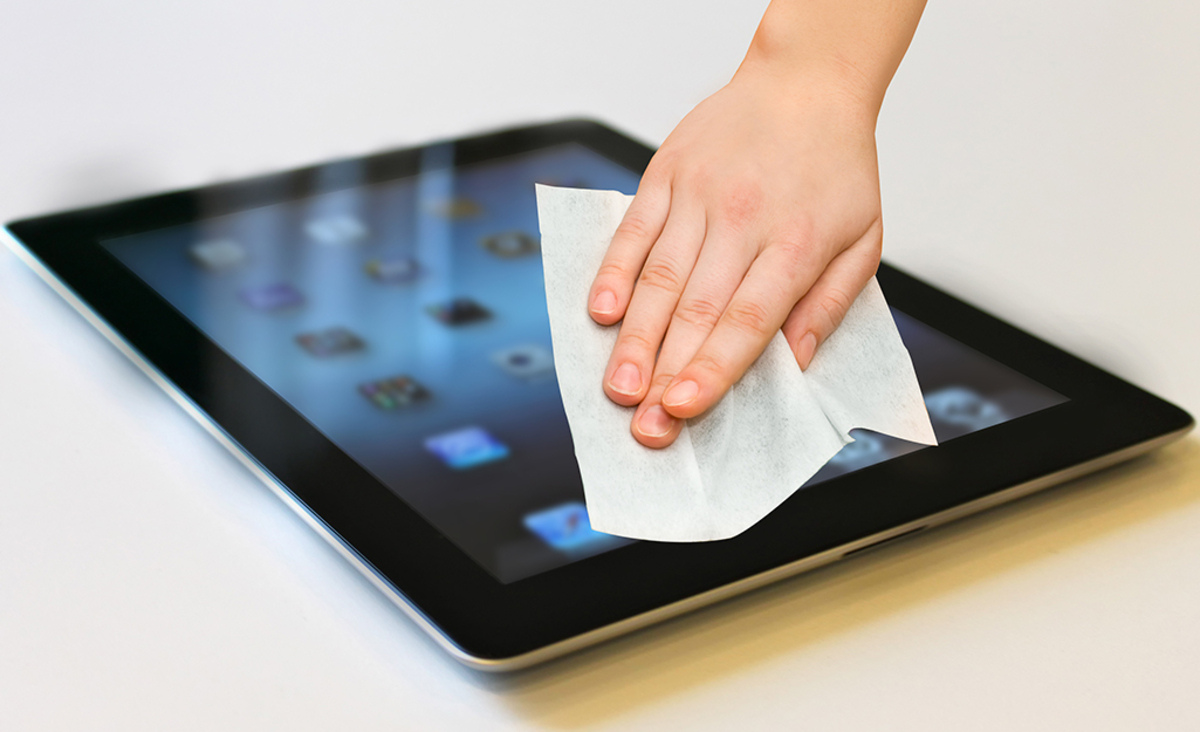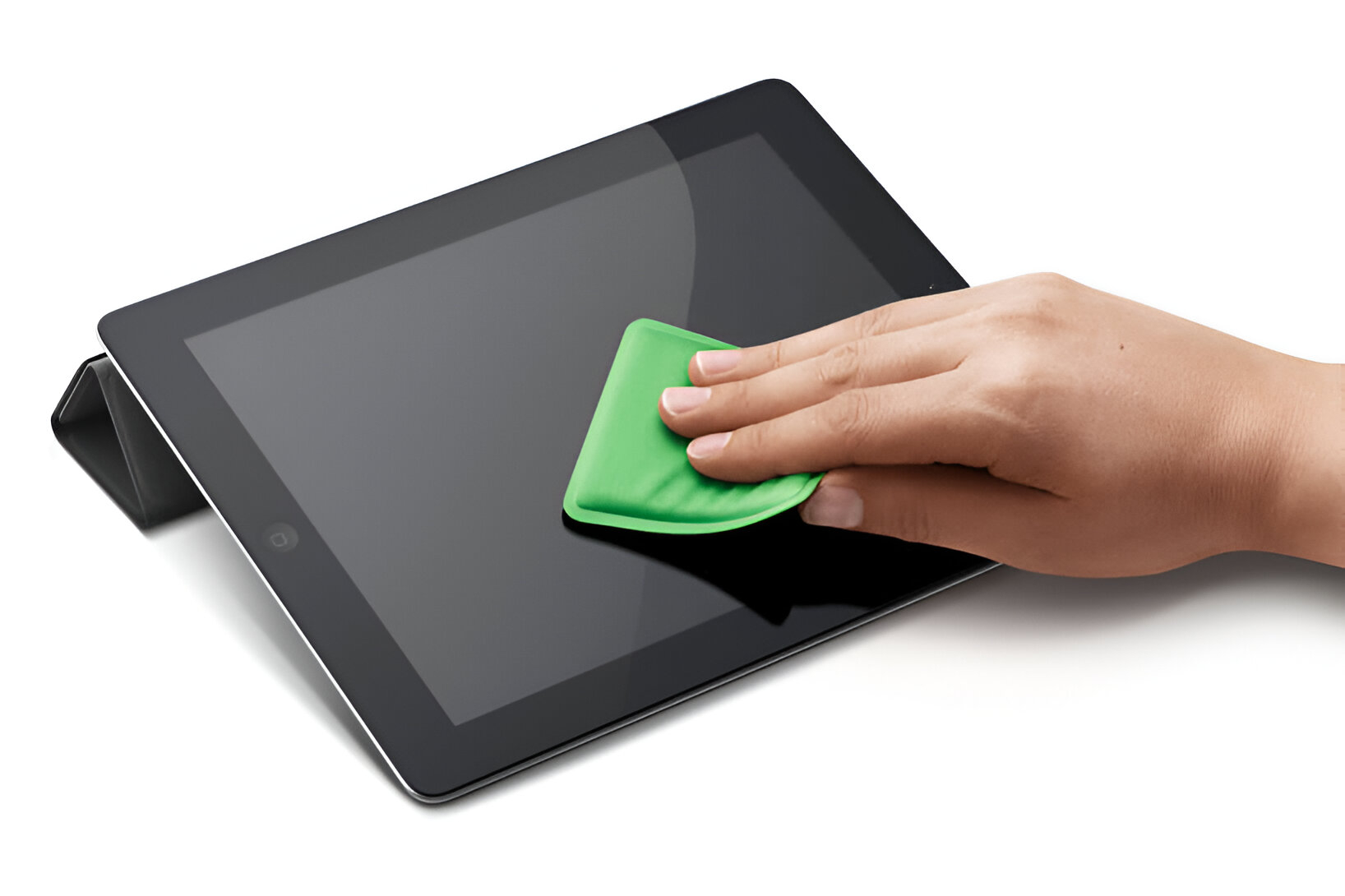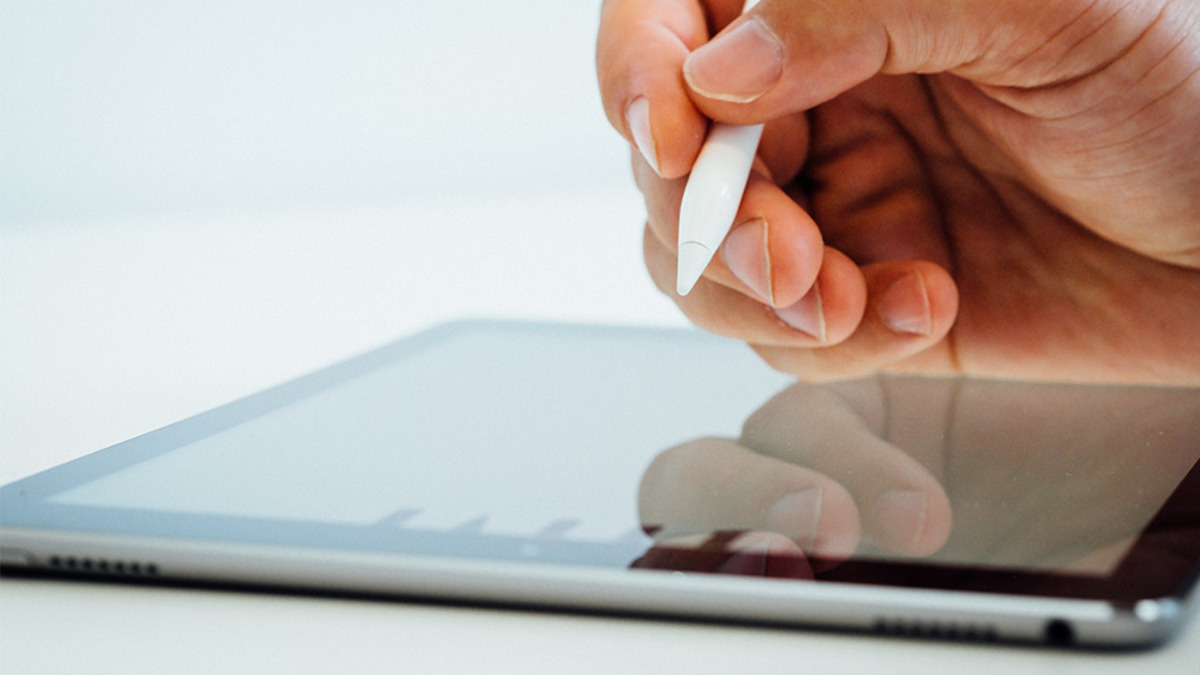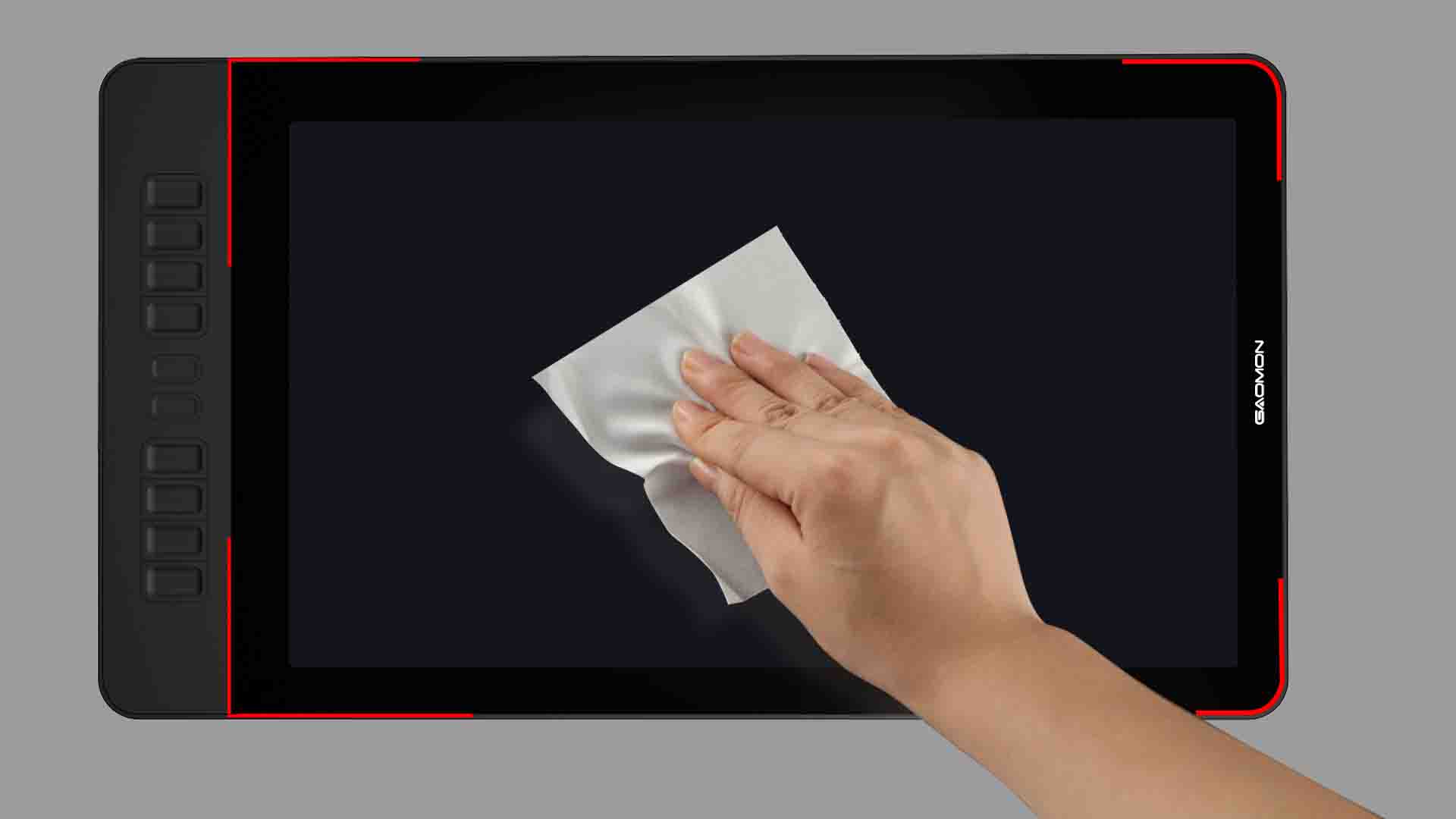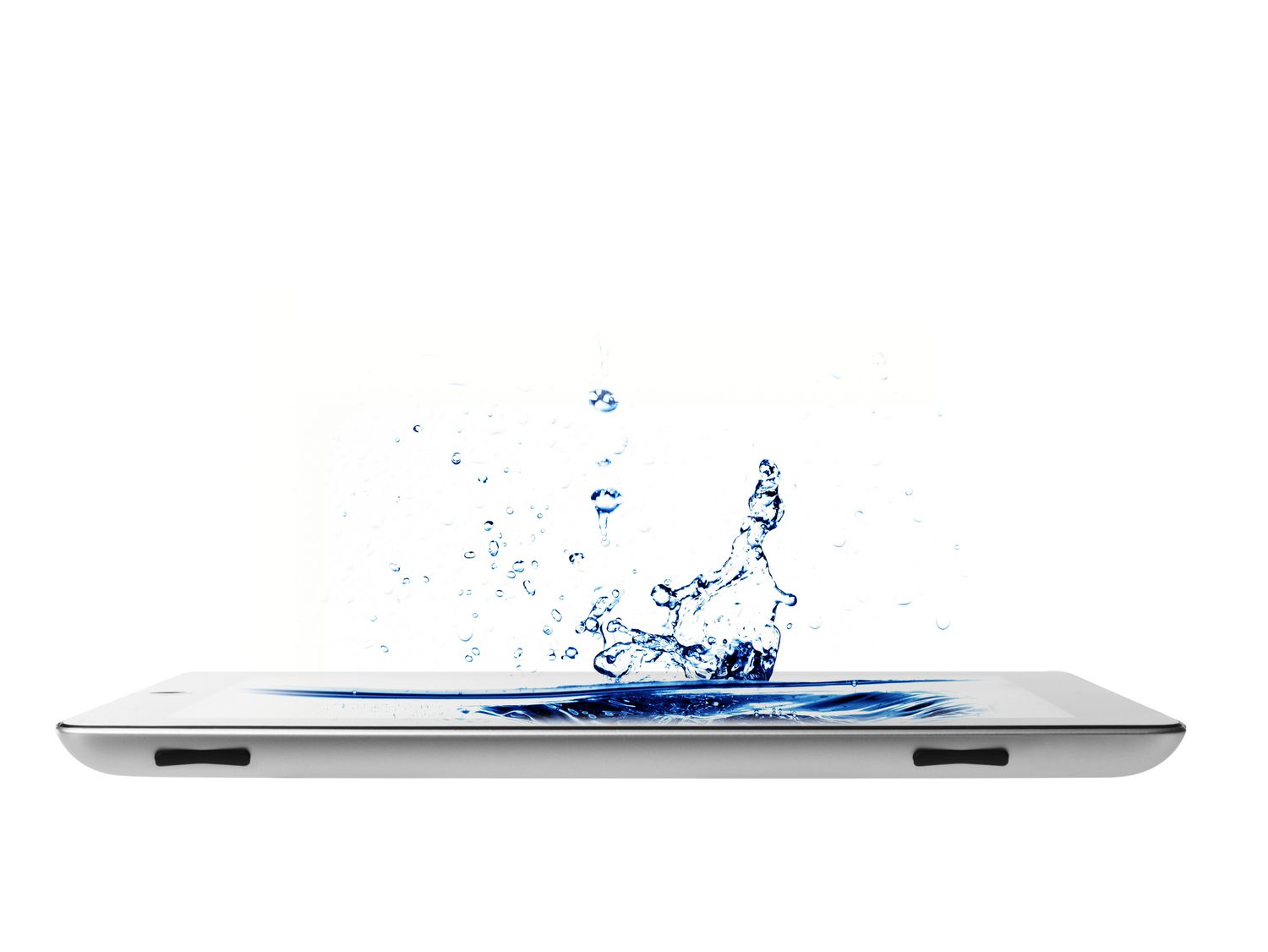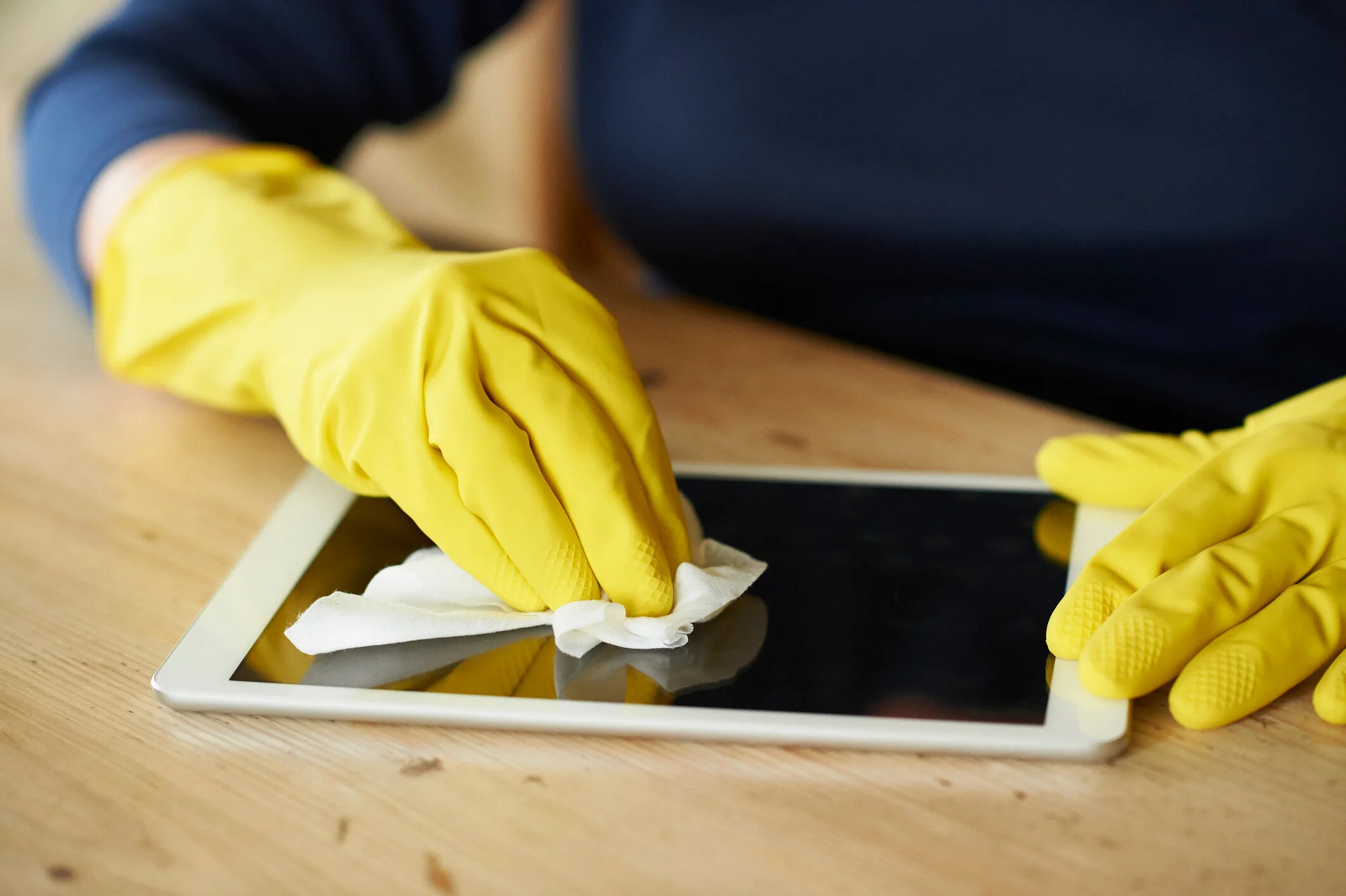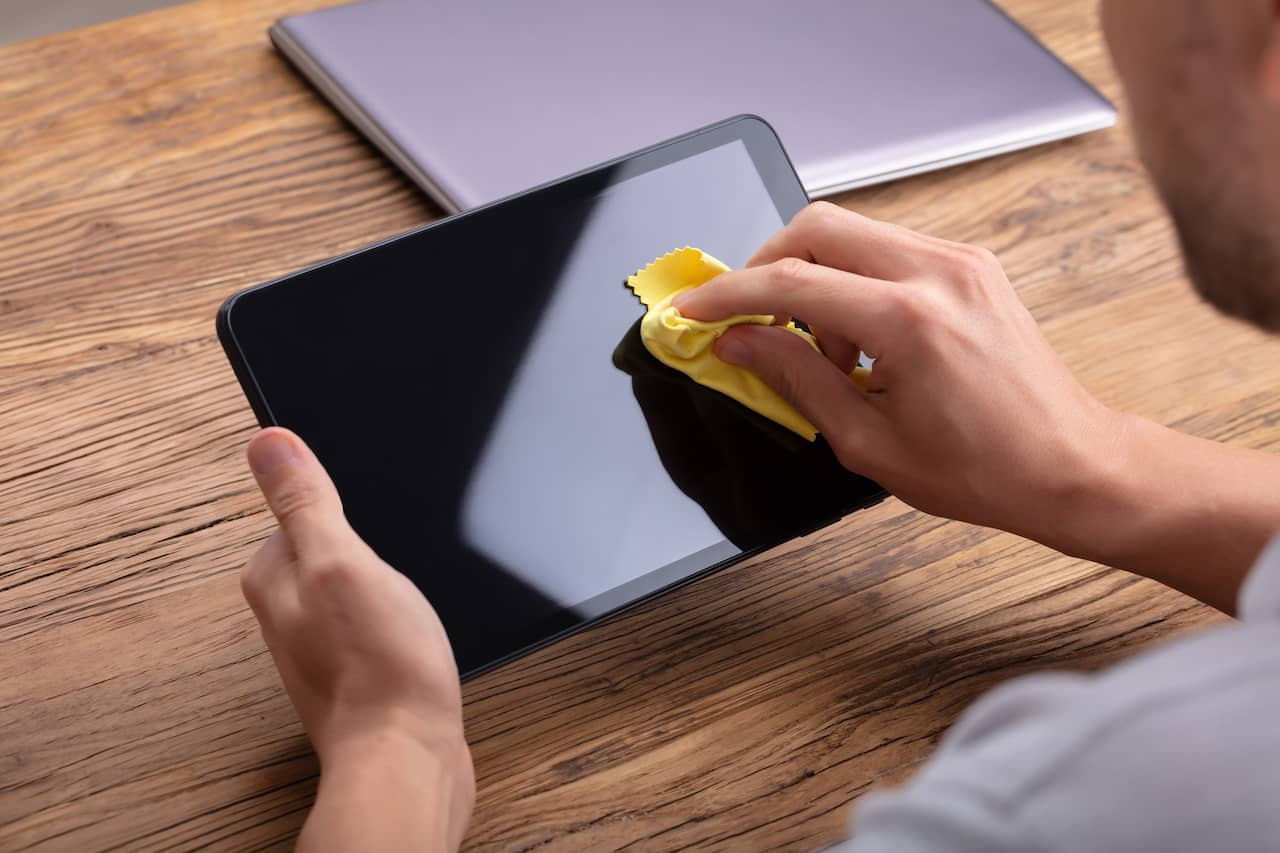Introduction
Welcome to our guide on cleaning your tablet screen! In today’s digital age, tablets have become an integral part of our lives, from staying connected with loved ones to being a valuable tool for work and entertainment. With constant use, it’s inevitable that your tablet screen will accumulate fingerprints, smudges, and dust, affecting its clarity and performance.
Keeping your tablet screen clean is not only essential for a better viewing experience but also for maintaining the longevity of your device. Regular cleaning not only removes dirt and grime but also prevents buildup, leading to potential damage. However, it’s crucial to choose the right method and cleaning solutions to avoid causing any harm to your tablet screen.
In this guide, we will discuss the importance of cleaning your tablet screen, the potential risks associated with using harsh cleaning chemicals, and safe and effective solutions to keep your tablet screen sparkling clean. Whether you use an Apple iPad, Samsung Galaxy Tab, or any other brand, these methods will help you maintain the pristine condition of your tablet screen.
It’s important to note that before beginning the cleaning process, you should always make sure your tablet is turned off and disconnected from any power sources. This will prevent any mishaps and ensure the safety of your device.
Now, let’s delve into the world of tablet screen cleaning and discover the best practices to keep your device looking as good as new!
Why it’s important to clean your tablet screen
A clean tablet screen is not just about aesthetics; it plays a crucial role in the functionality and longevity of your device. Regularly cleaning your tablet screen offers several benefits:
- Clearer display: Over time, fingerprints, smudges, and dust can accumulate on your tablet screen, causing it to appear dull and reducing image clarity. By regularly cleaning your tablet screen, you can ensure a crystal-clear display, allowing you to enjoy videos, photos, and text with optimal clarity.
- Improved touch sensitivity: Touchscreen responsiveness can be affected by the dirt and grime that builds up on your tablet screen. By removing these contaminants regularly, you can maintain the smooth and accurate touch functionality of your device, ensuring a fluid and enjoyable user experience.
- Enhanced device performance: Dust and debris on your tablet screen can find their way into the device’s internal components, potentially affecting its performance. Regular cleaning helps prevent the accumulation of dust, which can lead to overheating and slower operation.
- Prevention of scratches: Small particles on your tablet screen can act as abrasive agents, causing tiny scratches over time. By keeping your screen clean, you reduce the risk of these scratches, preserving the overall quality and value of your device.
- Health and hygiene: Tablets are often used by multiple individuals and can harbor bacteria, viruses, and other pathogens. Regularly cleaning your tablet screen helps eliminate these germs, reducing the risk of spreading infections and maintaining a healthier device for your everyday use.
By understanding the importance of keeping your tablet screen clean, you can ensure that your device continues to deliver optimal performance and a visually pleasing experience. In the following sections, we will explore the best practices for cleaning your tablet screen while avoiding harmful chemicals that could potentially damage your device.
Avoiding harmful chemicals: what to look for in cleaning products
When it comes to cleaning your tablet screen, it’s important to be cautious about the cleaning products you use. Some chemicals can be harsh and abrasive, causing damage to the screen’s sensitive surface or even affecting its functionality. Here are some factors to consider when choosing cleaning products for your tablet:
- Gentle and non-abrasive: Look for cleaning products specifically designed for use on electronic devices, as these are formulated to be gentle and non-abrasive. Avoid using products that contain harsh chemicals, such as ammonia, bleach, or acetone, as these can strip off the protective coating on your tablet screen.
- Alcohol-free: Products containing alcohol, such as rubbing alcohol, may seem like a convenient choice for cleaning your tablet screen, but they can actually damage the screen over time. Alcohol can strip away the oleophobic coating that helps repel fingerprints and smudges. Therefore, it’s best to avoid alcohol-based cleaning solutions.
- Lint-free: Cleaning products, such as microfiber cloths or wipes, should be lint-free to prevent any fibers from getting trapped between the screen and the device. These fibers can cause scratches or affect the display quality. Opt for high-quality microfiber cloths specifically designed for electronic screens.
- pH-neutral: pH-neutral cleaning solutions are ideal for tablet screen cleaning. These solutions have a balanced pH level, which ensures they don’t contain any acidic or alkaline properties that could harm the screen or its protective layer. Carefully read the labels to ensure the product is pH-neutral.
- Manufacturer recommendations: It’s always a good idea to refer to the manufacturer’s guidelines or instructions for cleaning your tablet screen. They may provide specific recommendations or cleaning methods tailored to their device’s screen type and coating. Following these guidelines can help ensure you don’t accidentally use any damaging products on your tablet.
By being mindful of these factors and choosing cleaning products that meet the criteria above, you can effectively clean your tablet screen without risking any damage to its surface or functionality. In the next section, we will explore safe and effective cleaning solutions that you can use to keep your tablet screen spotless and smudge-free.
Safe and effective cleaning solutions for tablet screens
When it comes to cleaning your tablet screen, there are several safe and effective solutions that you can use. These solutions are gentle, yet powerful enough to remove fingerprints, smudges, and dirt without causing any harm to your device. Here are some of the best options:
- Microfiber cloth and water: One of the simplest and safest ways to clean your tablet screen is by using a microfiber cloth dampened with water. Start by turning off your tablet and gently wiping the screen in a circular motion. The microfiber cloth will help pick up dirt and grime, leaving your screen clean and streak-free.
- Isopropyl alcohol solution: If your tablet screen has stubborn smudges or grease marks, you can use a mild isopropyl alcohol solution. Mix equal parts of isopropyl alcohol (70% or higher concentration) and distilled water. Dampen a microfiber cloth with the solution and gently wipe the screen. Be sure to avoid excessive moisture and never spray the solution directly onto the screen.
- Distilled water and white vinegar mixture: For a natural cleaning solution, you can mix equal parts of distilled water and white vinegar. This mixture can help remove stubborn smudges and disinfect your tablet screen. Apply the solution to a microfiber cloth and gently wipe the screen. Remember to turn off your tablet and avoid excessive moisture.
- Commercial screen cleaning products: If you prefer using commercial cleaning products, make sure to choose ones specifically designed for electronic screens. These products are formulated to be gentle and safe for your tablet screen. Follow the instructions provided on the packaging and use a microfiber cloth for application.
Whichever cleaning solution you choose, remember to apply gentle pressure and avoid harsh scrubbing. Always use a soft, lint-free microfiber cloth and be cautious not to let any liquid seep into the tablet’s ports or buttons.
It’s important to note that different tablet models may have specific cleaning recommendations, so always refer to the manufacturer’s guidelines to ensure you’re using the appropriate cleaning methods for your device.
Now that you have a range of safe and effective cleaning solutions at your disposal, let’s move on to some essential tips for cleaning your tablet screen and maintaining its pristine condition.
Microfiber cloth and water
One of the simplest and most effective ways to clean your tablet screen is by using a microfiber cloth and water. This method is safe for all types of tablet screens and helps remove fingerprints, smudges, and dust without causing any damage. Here’s how you can clean your tablet screen with a microfiber cloth and water:
- Start by turning off your tablet to avoid any accidental touches or damage.
- Gently remove any visible dust or particles from the screen using a dry microfiber cloth. This step helps prevent any scratches that could occur during the cleaning process.
- Dampen the microfiber cloth with a small amount of water. It’s crucial to use distilled water or filtered water to prevent any mineral deposits or residue on the screen.
- Gently wipe the screen in a circular motion, applying light pressure. Avoid pressing too hard, as this may damage the screen. Continue wiping until all fingerprints, smudges, and marks are removed.
- For stubborn spots, you can dampen the microfiber cloth a bit more or use a slightly damp cotton swab to target specific areas.
- Once you’re satisfied with the cleaning, use a dry microfiber cloth to gently buff the screen and remove any moisture or streaks.
Using a microfiber cloth is essential because it is designed to pick up and trap dirt and dust, preventing them from scratching the screen. The soft and lint-free fabric ensures a gentle yet effective cleaning process. Avoid using regular cleaning cloths or paper towels, as they may leave scratches or lint on the screen.
Remember, excessive moisture can damage your tablet, so make sure the cloth is only damp and not dripping wet. Avoid using any detergents, soaps, or cleaning agents, as they can leave residue or streaks on the screen.
Cleaning your tablet screen with a microfiber cloth and water is a quick and easy method that you can use as a regular maintenance routine. By keeping your tablet screen clean, you can enjoy a crisp and clear display for all your browsing, gaming, and media consumption needs.
Now that you know how to clean your tablet screen with a microfiber cloth and water, let’s explore other effective cleaning solutions.
Isopropyl alcohol solution
An isopropyl alcohol solution is a great option for tackling stubborn smudges, grease, and dirt on your tablet screen. Isopropyl alcohol, also known as rubbing alcohol, has excellent cleaning properties and evaporates quickly, making it safe for use on electronic screens. Here’s how you can use an isopropyl alcohol solution to clean your tablet screen:
- Before you begin, ensure that your tablet is turned off and disconnected from any power sources to prevent any accidents or damage.
- Mix equal parts of isopropyl alcohol (70% or higher concentration) and distilled water in a small container. This dilution will ensure that the solution is safe for your tablet’s screen.
- Dampen a microfiber cloth with the isopropyl alcohol solution. Make sure the cloth is not soaked or dripping with the solution, as excessive moisture can damage your tablet.
- Starting from one edge of the screen, gently wipe the surface in a circular motion. Apply light pressure and be careful not to use excessive force, as this may damage the screen. Continue wiping until all smudges, fingerprints, and dirt are removed.
- If you encounter stubborn spots or areas that require more attention, you can spot clean them with a slightly damp cotton swab using the isopropyl alcohol solution.
- Once you’ve cleaned the entire screen, use a dry microfiber cloth to gently remove any remaining moisture or streaks. Ensure that the screen is completely dry before turning on your tablet.
The isopropyl alcohol solution is effective in breaking down oils and smudges on the tablet screen, leaving it clean and shiny. However, it’s important to note that this method should be used sparingly and only when necessary, as excessive use of alcohol can potentially remove the oleophobic coating that helps repel fingerprints and smudges.
Always use a high-quality microfiber cloth when cleaning your tablet screen with an isopropyl alcohol solution. The microfiber cloth ensures that dirt and debris are picked up and not spread across the screen, preventing any scratches.
Remember, it’s crucial to follow the manufacturer’s guidelines and recommendations for cleaning your tablet screen. If your tablet has a specific screen coating or requires special care, it’s best to consult the manufacturer’s instructions before using an isopropyl alcohol solution.
Now that you know how to effectively use an isopropyl alcohol solution on your tablet screen, let’s explore another safe and effective cleaning method.
Distilled water and white vinegar mixture
A mixture of distilled water and white vinegar is a natural and effective cleaning solution for your tablet screen. White vinegar has mild acidic properties that help break down oils, grime, and smudges, while distilled water ensures there are no mineral deposits left behind. Here’s how you can use this mixture to clean your tablet screen:
- Prepare the cleaning solution by mixing equal parts of distilled water and white vinegar in a small container. For example, you can mix 1/2 cup of distilled water with 1/2 cup of white vinegar.
- Before applying the mixture to your tablet screen, make sure it is turned off and disconnected from any power sources.
- Dampen a microfiber cloth with the distilled water and white vinegar solution. Ensure that the cloth is not soaked or dripping with the solution.
- Gently wipe the screen in a circular motion, starting from one edge. Apply light pressure and be cautious not to press too hard, as this may damage the screen. Continue wiping until all fingerprints, smudges, and dirt are removed.
- If you encounter stubborn spots or areas that require more attention, you can use a slightly damp cotton swab with the distilled water and white vinegar solution to spot clean those areas.
- Once you’ve cleaned the entire screen, use a dry microfiber cloth to gently remove any remaining moisture or streaks.
The mixture of distilled water and white vinegar is an effective cleaning solution that helps remove smudges and disinfect your tablet screen. It’s a natural alternative to commercial cleaning products while still providing excellent results. However, it’s important to use this mixture sparingly and avoid excessive moisture on the screen.
Always use a high-quality microfiber cloth to prevent lint or fibers from getting trapped on the screen. The soft and lint-free nature of the cloth ensures that the screen remains scratch-free and clear.
It’s worth noting that some tablets may have specific instructions or precautions regarding the use of vinegar or acidic solutions on their screens. If you’re unsure, it’s best to consult the manufacturer’s guidelines or contact their customer support for more information.
Now that you know how to effectively use a distilled water and white vinegar mixture, let’s explore another cleaning method that involves commercial screen cleaning products.
Commercial screen cleaning products
If you prefer a convenient and ready-to-use option, there are various commercial screen cleaning products available that are specifically formulated for electronic devices. These products are designed to safely and effectively clean your tablet screen without causing any damage. Here’s how you can use commercial screen cleaning products to clean your tablet:
- Before starting, make sure your tablet is turned off and disconnected from any power sources.
- Read and follow the instructions provided with the commercial screen cleaning product. Different products may have specific usage guidelines or precautions that you should be aware of.
- Spray or apply a small amount of the product onto a microfiber cloth. Avoid spraying the solution directly onto the tablet screen to prevent any liquid from seeping into the device.
- Gently wipe the screen in a circular motion, starting from one edge. Apply light pressure and be careful not to use excessive force, as this may damage the screen.
- Continue wiping until all fingerprints, smudges, and dirt are removed. Pay extra attention to any stubborn spots that may require more thorough cleaning.
- Once you’ve cleaned the entire screen, use a dry microfiber cloth to gently remove any remaining moisture or streaks.
Commercial screen cleaning products are formulated to be safe and effective for electronic screens. They often leave a streak-free finish and help repel fingerprints. However, it’s important to choose products specifically designed for electronic screens and follow the instructions provided by the manufacturer.
When using commercial screen cleaning products, it’s recommended to use a high-quality microfiber cloth to ensure a gentle and scratch-free cleaning process. Avoid using excessive amounts of the cleaning solution and be mindful of any warnings or precautions provided on the product’s packaging.
By using commercial screen cleaning products, you can conveniently and effectively clean your tablet screen, maintaining its pristine condition for everyday use.
Now that you’re familiar with safe and effective cleaning solutions, it’s important to keep a few key tips in mind for effectively and safely cleaning your tablet screen. We’ll explore these tips in the next section.
Tips for cleaning your tablet screen
When it comes to cleaning your tablet screen, following a few essential tips can help ensure a safe and effective cleaning process. Here are some important tips to keep in mind:
- Turn off and disconnect: Always turn off your tablet and disconnect it from any power sources before cleaning the screen. This prevents any accidental touches or damage to the device.
- Use a microfiber cloth: Use a soft and lint-free microfiber cloth for cleaning your tablet screen. Microfiber cloths are gentle on the screen and help pick up dirt and oil without scratching the surface.
- Avoid excessive moisture: Whether you’re using water, a cleaning solution, or a commercial screen cleaner, make sure to use a dampened cloth rather than a dripping wet one. Excessive moisture can seep into the device and cause damage.
- Invest in a screen protector: Consider applying a screen protector on your tablet screen. Screen protectors act as an additional barrier against scratches and smudges and are easier to clean than the actual screen.
- Avoid using sharp objects: Never use sharp objects or abrasive materials to clean the screen. They can cause irreversible scratches or damage the screen’s protective coating.
- Follow manufacturer instructions: Always refer to the manufacturer’s guidelines for cleaning your specific tablet model. They may provide specific recommendations or precautions that are tailored to your device.
- Regular cleaning routine: Make cleaning your tablet screen a regular part of your device maintenance routine. Regular cleaning helps prevent buildup and keeps your screen looking clear and vibrant.
- Keep your hands clean: Before using your tablet, ensure your hands are clean and free from oils and lotions. This reduces the amount of smudges and fingerprints that can accumulate on the screen.
- Avoid direct sunlight: When cleaning your tablet screen, avoid doing it in direct sunlight or under bright lights. This helps to better see the dirt and smudges and prevents any cleaning solution from drying too quickly.
By following these tips, you can ensure that your tablet screen stays clean, clear, and in optimal condition for your everyday use.
Now that you have learned some valuable tips for cleaning your tablet screen, let’s wrap up our guide by briefly summarizing what we’ve discussed.
Conclusion
Cleaning your tablet screen is not only important for maintaining its appearance but also for ensuring optimal performance and longevity. By following the right methods and using safe cleaning solutions, you can keep your tablet screen looking pristine and free from smudges, fingerprints, and dirt.
In this guide, we discussed the importance of regular cleaning for your tablet screen and the potential risks associated with using harsh chemicals. We explored safe and effective cleaning solutio
ns, including the use of a microfiber cloth and water, an isopropyl alcohol solution, a distilled water and white vinegar mixture, as well as commercial screen cleaning products.
We also provided tips for cleaning your tablet screen, such as turning off your device, using a microfiber cloth, avoiding excessive moisture, following manufacturer instructions, and incorporating regular cleaning into your device maintenance routine.
Remember, always refer to the manufacturer’s guidelines for cleaning your specific tablet model to ensure you’re using the appropriate methods and products.
By taking the time to clean your tablet screen regularly and properly, you can enhance your viewing experience, maintain the screen’s clarity, and prolong the life of your device. So, grab your microfiber cloth and start cleaning your tablet screen with confidence!







